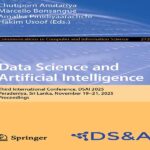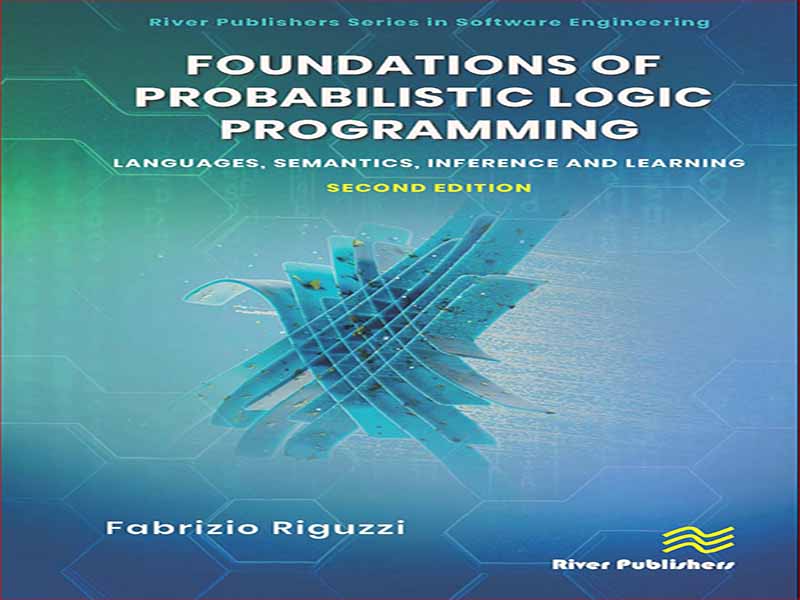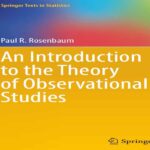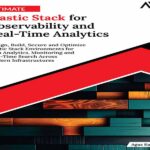- عنوان: Foundations of Probabilistic Logic Programming
- نویسنده: Agostino Dovier
- حوزه: منطق احتمالی
- سال انتشار: 2023
- تعداد صفحه: 548
- زبان اصلی: انگلیسی
- نوع فایل: pdf
- حجم فایل: 41.0 مگابایت
زمینه برنامهنویسی منطق احتمالی (PLP) در اوایل دهه 1990 توسط کارهای مهمی مانند [Dantsin, 1991], [Ng and Subrahmanian, 1992], [Poole, 1993b] و [Sato, 1995] آغاز شد.
با این حال، مشکل ترکیب منطق و احتمال از دهه 1950 مورد مطالعه قرار گرفته است [Carnap, 1950; گیفمن، 1964]. سپس در اواخر دهه 1980 تا اوایل دهه 1990، زمانی که محققان تلاش کردند رویکردهای احتمالی و منطقی هوش مصنوعی را با هم تطبیق دهند، مشکل در زمینه هوش مصنوعی برجسته شد [Nilsson, 1986; هالپرن، 1990; فاگین و هالپرن، 1994; هالپرن، 2003].
ادغام منطق و احتمال، توانایی اولین را برای نشان دادن روابط پیچیده بین موجودیت ها با توانایی دومی برای مدل سازی عدم قطعیت در مورد ویژگی ها و روابط ترکیب می کند. برنامه نویسی منطقی یک زبان کامل تورینگ مبتنی بر منطق را ارائه می دهد و بنابراین یک نامزد عالی برای یکپارچه سازی نشان می دهد.
از بدو تولد، رشته برنامهنویسی منطق احتمالی با پیشنهادات بسیاری برای زبانها و الگوریتمها برای استنتاج و یادگیری، شاهد افزایش مداوم فعالیت بوده است. پیشنهادهای زبان را میتوان به دو دسته گروهبندی کرد: آنهایی که از گونهای از معناشناسی توزیع (DS) استفاده میکنند [ساتو، 1995] و آنهایی که از رویکرد ساخت مدل پایه دانش (KBMC) پیروی میکنند [Wellman et al., 1992; باکوس، 1993].
تحت DS، یک برنامه منطق احتمالی، توزیع احتمال را بر روی برنامه های نرمال منطقی تعریف می کند و سپس احتمال یک پرس و جو زمینی از توزیع مشترک پرس و جو و برنامه ها به دست می آید. برخی از زبانهای زیر DS عبارتند از: برنامههای منطق احتمالی [Dantsin، 1991]، احتمال ربوده شدن شاخ [Poole، 1993b]، PRISM [Sato، 1995]، منطق انتخاب مستقل [Poole، 1997]، pD [Fuhr، 2000]، برنامههای منطقی با تفکیکهای مشخص شده [Vennekens و همکاران، 2004]، ProbLog [De Raedt و همکاران، 2007]، P-log [بارال و همکاران، 2009] و CP-logic [Vennekens و همکاران، 2009].
در عوض، در زبان های KBMC، یک برنامه به عنوان یک الگو برای تولید یک مدل گرافیکی زمینی، چه یک شبکه بیزی یا یک شبکه مارکوف، دیده می شود. زبانهای KBMC شامل شبکه بیزی رابطهای [Jaeger، 1998]، CLP(BN) [Costa و همکاران، 2003]، برنامههای منطق بیزی [Kersting and De Raedt، 2001] و زبان عامل Prolog [Gomes و Costa، 2012] هستند. تمایز بین زبانهای DS و KBMC در واقع غیر واضح است زیرا برنامههای زبانهای پیرو DS را میتوان به مدلهای گرافیکی نیز ترجمه کرد.
هدف این کتاب ارائه یک نمای کلی از رشته PLP، با تاکید ویژه بر زبان های تحت DS است. دلیل آن این است که رویکرد آنها به ادغام منطق-احتمال به ویژه در زبانها ساده و منسجم است، اما با این وجود به اندازه کافی قدرتمند است که در حوزههای مختلف مفید باشد. علاوه بر این، می توان به آنها معنایی کاملاً منطقی داد، بدون اینکه لزوماً به ترجمه به مدل های گرافیکی متوسل شود.
هدف این کتاب این نیست که شرح کاملی از موضوع باشد، حتی زمانی که به DS محدود می شود، زیرا این زمینه بزرگ شده است، با یک سری کارگاه اختصاصی که در سال 2014 آغاز شده است. هدف من ارائه ایده های اصلی برای معناشناسی است. استنتاج، و یادگیری و برجسته کردن ارتباطات بین روشها.
مخاطبان مورد نظر این کتاب، محققان علوم کامپیوتر و هوش مصنوعی هستند که میخواهند مروری بر PLP داشته باشند. با این حال، میتواند توسط دانشجویان، بهویژه فارغالتحصیلان، برای آشنایی با موضوع، و توسط پزشکانی که مایلند جزئیات بیشتری در مورد عملکرد درونی روشها به دست آورند، استفاده شود.
بسیاری از نمونههای کتاب شامل پیوندی به صفحه cplint برنامه وب در SWISH (https://cplint.eu) است [Riguzzi et al., 2016a; آلبرتی و همکاران، 2017]، که در آن کد را می توان به صورت آنلاین با استفاده از cplint اجرا کرد، سیستمی که ما در دانشگاه Perrara توسعه دادیم که شامل الگوریتم های بسیاری برای استنتاج و یادگیری به زبان های مختلف است.
The field of Probabilistic logic programming (PLP) was started in the early 1990s by seminal works such as those of [Dantsin, 1991], [Ng and Subrahmanian, 1992], [Poole, 1993b], and [Sato, 1995].
However, the problern of combining logic and probability has been studied since the 1950s [Carnap, 1950; Gaifman, 1964]. Then the problern became prominent in the field of Artificial Intelligence in the late 1980s to early 1990s when researchers tried to reconcile the probabilistic and logical approaches to AI [Nilsson, 1986; Halpern, 1990; Fagin and Halpern, 1994; Halpern, 2003].
The integration of logic and probability combines the capability of the first to represent complex relations among entities with the capability of the latter to model uncertainty over attributes and relations. Logic programming provides a Turing complete langnage based on logic and thus represents an excellent candidate for the integration.
Since its birth, the field of Probabilistic Logic Programming has seen a steady increase of activity, with many proposals for languages and algorithms for inference and learning. The langnage proposals can be grouped into two classes: those that use a variant of the Distribution semantics (DS) [Sato, 1995] and those that follow a Knowledge Base Model Construction (KBMC) approach [Wellman et al., 1992; Bacchus, 1993].
Under the DS, a probabilistic logic program defines a probability distribution over normallogic programs and the probability of a ground query is then obtained from the joint distribution of the query and the programs. Some of the languages following the DS are: Probabilistic Logic Programs [Dantsin, 1991], Probabilistic Horn Abduction [Poole, 1993b], PRISM [Sato, 1995], Independent Choice Logic [Poole, 1997], pD [Fuhr, 2000], Logic Programs with Allnotated Disjunctions [Vennekens et al., 2004], ProbLog [De Raedt et al., 2007], P-log [Baral et al., 2009], and CP-logic [Vennekens et al., 2009].
Instead, in KBMC languages, a program is seen as a template for generating a ground graphical model, be it a Bayesian network or a Markov network. KBMC languages include Relational Bayesian Network [Jaeger, 1998], CLP(BN) [Costa et al., 2003], Bayesian Logic Programs [Kersting and De Raedt, 2001], and the Prolog Factor Language [Gomes and Costa, 2012]. The distinction among DS and KBMC languages is actually non-sharp as programs in languages following the DS can also be translated into graphical models.
This book aims at providing an overview of the field of PLP, with a special emphasis on languages under the DS. The reason is that their approach to logic-probability integration is particularly simple and coherent across languages but nevertheless powerful enough tobe useful in a variety of domains. Moreover, they can be given a semantics in purely logical terms, without necessarily resorting to a translation into graphical models.
The book doesn’t aim though at being a complete account of the topic, even when restricted to the DS, as the field has grown large, with a dedicated workshop series started in 2014. My objective is to present the main ideas for semantics, inference, and learning and to highlight connections between the methods.
The intended audience of the book are researchers in Computer Science and AI that want to getan overview of PLP. However, it can also be used by students, especially graduate, to get acquainted with the topic, and by practitioners that would like to get more details on the inner workings of methods.
Many examples of the book include a link to a page of the web application cplint on SWISH (https://cplint.eu) [Riguzzi et al., 2016a; Alberti et al., 2017], where the code can be run online using cplint, a system we developed at the University of Perrara that includes many algorithms for inference and learning in a variety of languages.
این کتاب را میتوانید بصورت رایگان از لینک زیر دانلود نمایید.




































نظرات کاربران